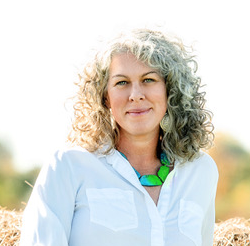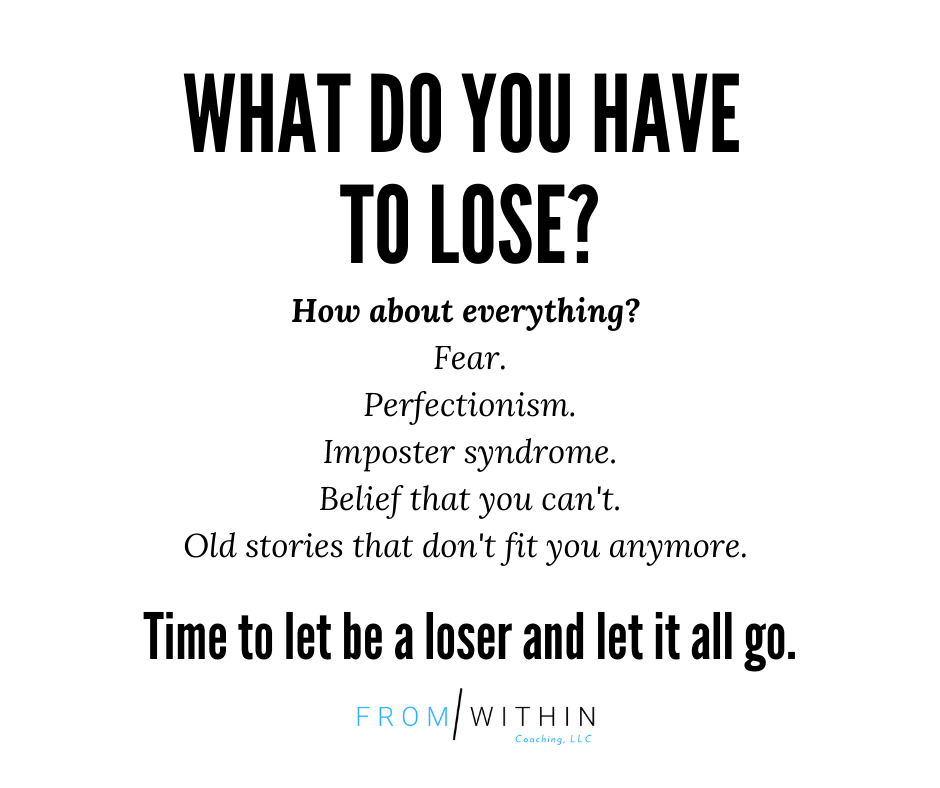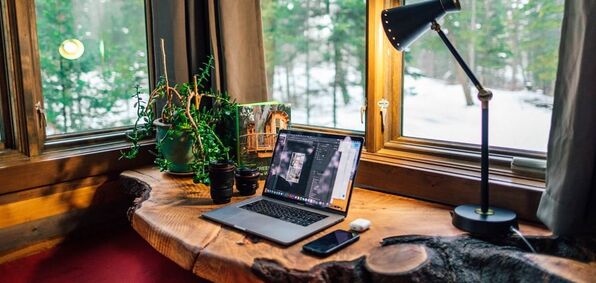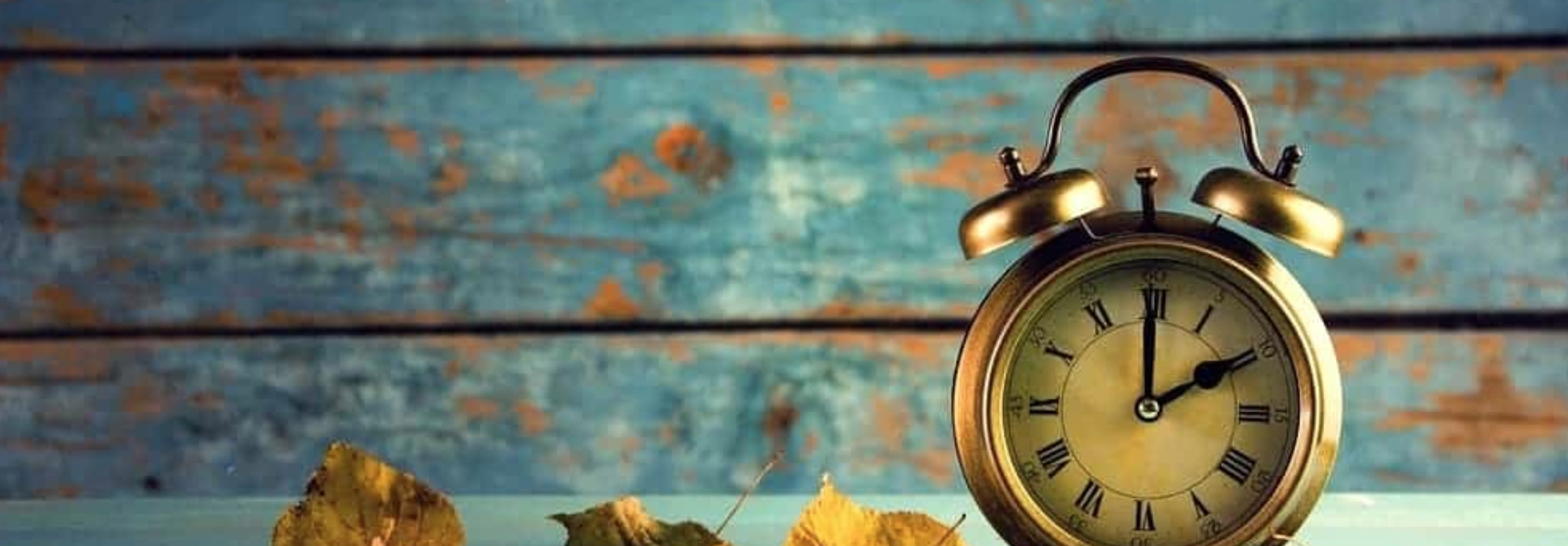|
I spoke to a Client today and all I could hear was his fear of trying something new
for his business that he had never done before, but that was a necessity to survive through this time of chaos. The fear vibrated through his voice. Even though the knew he needed to take this step in his business to survive this crisis, he was more scared of taking action than losing his business. What was he fearful of? Fear of not being enough. Fear of being an imposter. Fear of not being perfect. Fear of old stories that are keeping him back from finding his truth. Well folks, I have never lived through a more fearful time than now, March 2020. So I wonder...for all of us, if we are going to survive this pandemic physically, mentally, and economically, we need to let go. We need to become losers and lose everything. Said another way, we need to lose in order to win. We need to lose our fear. We need to lose the belief that we are not enough. We need to lose the idea of perfection. We need to let go of the old stories keeping us from doing what we want. And what we need to do, to survive. Be a loser to be a winner. Be safe, be brave, be hopeful. -AM The "C-Word" (aka Corona Virus) that we have heard has taken on a more intense meaning in the last week. The word is creating fear and panic. People are isolating. But we at FromWithin Coaching challenge you, in order to “insulate” vs the “isolate”, to use differnt words that start with C that are going to be more helpful in getting us through this uncertain time. What are other the “C-Words” we encourage you to say and DO more? Community Connection Certainty Compassion Conviction Commitment Cause Contribute Care Cleverness Consciousness Create Co-Create Calm Curious Capable Can-do Champion Celebrate Confirm Current Courtesy Courage Choice Continue Cooperate Capable Civility Competence Conversation Chance Cohesion Contemplative Contribute Center Character Contribute Continuity Closeness Climb Creative Clarity Choose Cookies (not kidding, they are helpful) And finally, Coach. Your job is to be you and practice saying (and doing) these “C-Words” more than the other c-word. Folks - the world is changing quickly.
FromWithin Coaching is going to be here to help you make sense of the chaos happening in the world right now. And help us as well as we are human beings and nervous as well. We are a community for each other...stay posted as we share ideas of "insulating" yourself from the chaos, not isolating. -Amy Magyar, Owner of FromWithin Coaching and Human Being as nervous as anyone else, but dedicated to helping us all find solace during these times. A friend of mine sent me a photo of a sunset this past week - it has been an incredibly unprecedented week in our lifetime and the sunset he sent was almost a way to "seal" the day and the crazy week - it was exactly what I needed... I replied back to his text with the photo above - the sunset from Lake Champlain here in Vermont. His text reply back was simple - "challenge accepted." And like that, we started a daily ritual of sending sunsets to each other at the end of the day... The reason I mention sunset ritual is to challenge YOU in doing something like this to help you manage the unease and anxiety many are reporting feeling. For me, I am connected at least once a day to something I can be grateful for. And to someone I care for. Although with social distancing, I have chosen not to see this "sunset friend" in person, I still get to interact with him daily...and get a dose of sunset each evening. So consider doing something that can become a ritual to stay connected with your community, or a loved one - maybe the ritual lasts for a few weeks, or a few months as they are forecasting our need to social distance. But I think a ritual like this for me, is one I hope I can keep for a lifetime with my friend. One last thing on this Sunday, we have no idea what next week is going to bring us...but a suggestion one of our Coaches, Alexandra Hughes shared with me to help prep for the week is, like screen time, to stop listening or watching anything in regards to the Corona Virus at least two hours before bedtime. It will give your brain (and heart) a chance to stop the information download and perhaps allow you to process the day. And perhaps think about a sunset... FromWithin Coaching will be here to send you thoughts, ideas, and suggestions to make your week "easier." It is something that we hope helps you, but also, selfishly, helps us...  - Amy Magyar, Owner of FromWithin Coaching and believer in the power of sunsets. Finding Insulation without Isolation in the Viral Age -Blog Post by Jane Taylor, working from home since 1997. Working remotely and social distancing are acts of self-care. They are also part of our social contract. In order to get through the uncertainty brought about by Corona, we must work together and stay apart. But this insulation need not be isolating. With vigilance and care, we can keep our personal and business connections strong even as we keep our distance. The verb insulate, means "protect from heat, cold, or noise," like when you add an extra layer of clothing to insulate yourself from the cold. You can insulate a wall to keep sound out, or insulate your house to keep cold air from getting inside. So, to insulate is to protect against unwanted changes.”[1] In the era of the C-Word (Covid-19), self-quarantine and social distancing are the types of insulation recommended by the CDC and other health officials. This recommendation is backed by empirical data. In 1918, a flu epidemic killed 20-50 million people globally. There was no cure. Symptoms were managed with improvised home remedies. The first official preventive measures included “the closure of public meeting places, such as theaters, and the suspension of public meetings. In addition, long church sermons were prohibited, and Sunday instruction was to last no more than five minutes.”[2] Taking it further back to the plague outbreak in Florence in 1348, officials also recommended social isolation. However, Italian theologians advocated that people “beware of fear, anger, sadness, excessive anguish, heavy thoughts and similar things. And equally one should take care to be able to be joyful, to be happy, to listen to lullabies, stories and melodies.” Several plague advice books hit the newsstands in the 14th Century including Giovanni Boccaccio’s The Decameron (a collection of amusing and racy bedtime stories meant to keep spirits high) which instructed citizens on how to maintain mental wellbeing in times of epidemics and isolation. “Boccaccio also understood the crucial role of what we now call social networks in public health crises.”[3] As we ‘protect against unwanted changes’ and move our offices and classrooms to online locations, our need for human connection grows almost in proportion to viral spread. And yet, our current public health crisis is exacerbated by a crisis of disconnection in society. In other words, loneliness is also killing us. Working remotely will only make the disconnection worse unless we actively counter it with meaningful connection. We need stories, connection, and a sense of belonging to keep us human. Psychology Today tells us that, “Being alone can result in negative reactions related to loneliness (e.g., sadness, hopelessness) or it can have positive reactions related to solitude (e.g., spiritual and creative growth, restoring one’s health and energy).”[4] With diligence and the aid of technology, we have the power to choose our reaction. Here are some of our favorite tips on mitigating loneliness and staying connected (staying connected will also bolster productivity) as we work remotely: Schedule Face-to-Face Time Non-verbal communication is a huge part of communication. As a very transparent eye-roller, I relish the insulation email and text offer, but also appreciate seeing the faces of my friends and colleagues. Schedule regular online meetings and video chats. Be Proactive About Scheduling Make time to make time with your boss, your colleagues, your direct reports, your friends. A meeting request shows not only that you care, but also that you are on the ball. Schedule both one-on-one and team phone conversations and video chats. Don’t Forget the Niceties of Chit Chat In email and in video chats, human connection is…well… dependent upon connecting as humans. Before getting right to the meat of the business matter at hand, engage in authentic personal communication. You need not reveal all, but some light conversation about your well-being and your concern for the well-being of others will bolster that well-being. A rising tide lifts all ships… Work When Your Colleagues Work Be available and respond quickly. Use LinkedIn LinkedIn is a business networking platform. Use it. While the cute pit bull videos on Facebook are heartwarming, the amount of disinformation, divisiveness, and distraction that social media channel foments is counterproductive to your work and counter indicated to true human connection. The comparison Facebook enables and encourages (i.e., my tropical vacation is more luscious than your tropical vacation) robs us of joy, makes us feel small and undervalued, and creates further disconnection. LinkedIn, on the hand, is more about sharing business ideas and innovations. Make sure your LinkedIn profile is up to date and use it. As the stock market crashes, the NBA cancels its season, and your favorite yoga studio closes its doors, it is certainly getting harder to eschew “fear, anger, sadness, excessive anguish, heavy thoughts and similar things.” But staying connected helps. By controlling the things we actually can control, we gain agency. It is not naively or unreasonably optimistic, it’s part of our evolution. -Jane Taylor, working from home since 1997. [1] https://www.vocabulary.com/dictionary/insulate [2] https://www.ncbi.nlm.nih.gov/pmc/articles/PMC6477554/ [3] https://www.newstatesman.com/2020/03/coronavirus-survive-italy-wellbeing-stories-decameron [4] https://www.psychologytoday.com/us/blog/emotional-nourishment/201612/why-we-need-each-other Thank you Jane Taylor for another timely blog post.
Folks - the world is changing quickly. FromWithin Coaching is going to be here to help you make sense of the chaos happening in the world right now. And help us as well as we are human beings and nervous as well. We are a community for each other...stay posted as we share ideas of "insulating" yourself from the chaos, not isolating. -Amy Magyar, Owner of FromWithin Coaching and Human Being as nervous as anyone else, but dedicated to help us all find solace during these times. Working from Home: Setting Up Business When Virtual goes Viral -Blog Post by Jane Taylor, working from home since 1997. Corona is the new C-Word. If it has not already affected you professionally, it soon will. As we face unprecedented uncertainty in the marketplace, in the office, and in our careers, we will have to dig deep FromWithin. It feels like we are being tested, but whether as an act of self-quarantine or as simple self-advocacy, many of us are going to have to work remotely. “The coronavirus is putting remote work to a gigantic test, and at a totally unprecedented scale. Throughout China, Italy, Japan and South Korea, workers have been on lockdown.”[1] Universities are moving to remote methods of learning; we and our clients are preparing for that inevitability. Much of our work is already engaged remotely, we’ve got years of experience to share. As you join the ranks of newly remote workers and learn to practice social distancing, you’ll want to stay connected. In this series on working remotely in the Viral Age we will touch on keeping the human connection we need without touching any germs or extensive handwashing and examine ways to:
Let’s start with your virtual office. Working remotely can be extremely productive when you set yourself up for success. Here are our favorite tips: Time Stick to your work schedule. Work when you would normally be working. Use your morning commute time to get some exercise or walk the dog. Use your evening commute time to organize your accomplishments for tomorrow. End your workday at a reasonable hour. Professionalism Dress for work. You may be tempted to work in your pajamas, but such garb inspires a certain laissez-faire unprofessionalism. Take a shower, shave, get dressed. Go to work. Workspace Make a clean and organized workspace. It need not be large; let it not be chaotic. Set up a dedicated work environment. Do not eat at your desk. Distractions Your home is filled with your life distractions. Your garage needs sorting, your laundry needs washing, your motorcycle needs riding, Fido needs walking. Commit to your work before letting yourself be distracted. Whether that means fully completing a project or dedicating 90 minutes to it without diversions, make the commitment. Stick to it. Set a timer, if you need to. Your garage can wait. Communicate Working from home can create freedom, but it can also create discord. Your team is no longer one desk away; make sure communication with them is open, frequent, and clear. Make your expectations known. Make your accomplishments known. Use common courtesy and good manners. If you fear your message could be misconstrued, it probably will be. Take time for clarity: read your messages out loud before sending. Let your team, colleagues, clients know when you will be available. Be available at the time. Insulate yourself from Corona without isolating yourself from creativity Working remotely can be lonely. Steve Jobs was a famous opponent of remote work, claiming that “Creativity comes from spontaneous meetings, from random discussions.”[2] But spontaneous creativity can also happen by text. Your closest collaborators are only as far away as your phone. Keep your channels of communication open. Schedule and keep regular Zoom, Skype, or FaceTime meetings with your colleagues. Necessity is the mother of invention. With time, exploration, and practice, working remotely can become as creative and rewarding as working at the office. _______________________________________________________________________________ [1] https://www.npr.org/2020/03/09/812898220/laundry-between-emails-working-from-home-goes-viral-in-the-time-of-coronavirus [2] https://www.nytimes.com/2020/03/10/technology/working-from-home.html  Thank you Jane Taylor for this timely blog post. Folks - the world is changing quickly. FromWithin Coaching is going to be here to help you make sense of the chaos happening in the world right now. And help us as well as we are human beings and nervous as well. We are a community for each other...stay posted as we share ideas of "insulating" yourself from the chaos, not isolating. -Amy Magyar, Owner of FromWithin Coaching and Human Being as nervous as anyone else, but dedicated to help us all find solace during these times. As Coaches, we are asked all the time to help our clients find the "25th hour" in the day...they say there is NEVER enough time, and if they could just have one more hour each day, they would get so much done! Sound familiar? But what would you do with an entire extra day? February 29, 2020 is just around the corner. At FromWithin Coaching, we are hoping that you won't waste the day...instead, live it with intention. What should you do with an entire 24 hours? Here are some ideas our Coaches have...  What about a day of "Beginner's Mind?" - Mary McClements 1. Practice having a "beginners mind." What is beginner’s mind? It’s dropping our expectations and preconceived ideas about something, and seeing things with an open mind, fresh eyes, just like a beginner. If you’ve ever learned something new, you can remember what that’s like: you’re probably confused, because you don’t know how to do whatever you’re learning, but you’re also looking at everything aspect of it as if it’s brand new with curiosity and wonder. What does that look like? Research classes in your community and look for one(s) that you’ve always wanted to try, or return to something you love but haven’t had the time to do it in awhile. For example, if you’ve done a lot of art in the past and loved it, but because the rest of life can get in the way you haven’t created anything in awhile, commit yourself to a weekend workshop or a series in a medium you’ve always wanted to try. Bring to your research, and hopefully a class, a beginners mind. 2. Get into the woods, sit near a lake or in a field….anywhere that is quiet….and just listen, take deep breaths, smell the world around you, explore off the trail. Many of us in childhood spent a lot of time playing and exploring in nature and we often let go of this play in nature as we age. You’ll be amazed how this time will give you a re-boot!  What about a day of Self Investment? - Augusta Good Krahl My suggestion would be to have it be a day for self-investment. Find something, or some things, that you have been wanting to do but never do because it either costs too much or seems "selfish". Something that is tied to a goal or a desired way of being. I would encourage it to be something that feels edgy and is outside of your comfort zone!  What about a day of "Gratitude?" - Lu Setnicka Make it a day of GRATITUDE (I’ve been trying to practice this more personally): smile at everyone as you do your errands, say “thank-you” when normally you might not have, write a quick note to those in your life you’re grateful for, spend time at the dinner table articulating something that occurred that day you are grateful for.  What about a day of "Writing?" - Jane Taylor Start a gratitude journal. Start by writing five things you are grateful for. That is a great way to begin your journey of self-care. Self-care is empowering. Self-care helps you move from existing to living. Self-care is doing work that matters. Self-care isn’t selfish.  What about a day with Friends? - Alexandra Hughes Go on a date with friends you always mean to make plans with but never do. Or try a new class (fitness, art, language, cooking...) Better yet, make your friend date one of those new classes!  What about a day of Self Care? - Megan Flanagan I would recommend to my clients to take our extra LEAP DAY and do something for themselves that involves self care. It's such a buzz word but it is also necessary. Most of my clients are female entrepreneurs. They are pushing to grow their businesses while managing their household. They rarely stop to take the time for themselves. The 29th is a great opportunity to give yourself the gift of self care-what ever that looks like for you. Is it physical, spiritual, emotional, mental, or social? Either way- GO FOR IT, we all just got an extra 24 hours!!!  What about a day of no blue screens? - Amy Magyar What if you turned off every blue screen in your life? Phone? Computer? TV? What if instead of looking at a blue screen, you go and find some blue sky? Get outside and go play. The blue screen will be there tomorrow. But the blue sky might not be. Go live. Put down your phone. Now get out there and go live with intention
on the 29th! It's a free day! When I first started coaching 14 years ago, I’d get asked “What is a Coach?” way more than I do now. This is a wonderful thing because that tells me that more and more people are seeking Coaches or at least understand what a Coach is. It also tells me that coaching is becoming a more accepted form of support in one’s career, life, or business. However, the question I do find myself answering often is “What is the difference between job search coaching and clarity career coaching?” Good question! “Isn’t it all career coaching?” Yes and no… FromWithin Coaching is proud to support hundreds of clients each year—from students to seasoned professionals. We love helping clients find a career that brings them happiness. It’s our specialty. But in order to understand how we can help you, it’s important for you to understand the difference between these two different types of career coaching – job search coaching and clarity coaching – so you can consider what might be the best fit for your specific situation. Job Search Coaching is for you if you are asking yourself any of these questions:
And so on… What you’ll see is a theme of strategy – “how” or “what” is the key in these questions. A job search coaching client is seeking strategy, tactics, steps, and hints on how to handle a job search. Career Clarity Coaching is for you if you are asking yourself any of these questions:
To sum it up: Clarity first – Job Search second. You don’t want to leave it to chance that you’ll find your dream job based on who is hiring the week you look at your career alerts, Indeed, or wherever you’re searching. Now that you know the difference, it’s up to you to ask yourself: “What support do I really need?” Is it getting clear on what might be next in your career, or how to get there? Finally, to lock in the learning I hope I was able to offer, as a lover of metaphors, I’d be remiss if I didn’t use one to explain the difference. Job searching coaching is for you if you’re driving your “car” on empty with the orange fuel light on and there is no gas station in sight. You need strategy to find the gas station. Clarity career coaching is for you when you don’t know which car to get into in the first place! Still not sure? No problem. We offer free exploratory calls to help you determine whether you need fuel or the clarity on which car to drive. -Coach Amy  Happy New Year! A friend of mine recently posted the following on Facebook: “The 3 C’s of Life: Choices, Chances, Changes. You must make the choice, to take a chance, if you want anything in life to change.” I couldn’t think of anything more appropriate for the work I see put in by my coaching clients. But then I thought some more and realized there was a 4th “C” to add: Courage. It takes courage to a) realize you DO have a choice in any situation, b) taking a chance can be risky, and c) with change can come great reward and satisfaction. As a coach I help my clients take stock of where they are, where they want to be, and what’s getting in the way of them realizing those goals. And I’ll be the first to say having that honest conversation with oneself often takes bucket loads of courage, especially if there is fear of failing. But what’s the cost of remaining where you are? Restlessness? Disengagement? Despair? Consider a new approach: are your talents being leveraged every day? Are you in a personal and professional environment that reflects your core values? Do you even know what your core values are? What’s holding you back from taking the leap you know you should be taking? If you have the courage to begin that exploration, make the choice to take a chance on developing a relationship with a professional coach, one whose purpose is to guide you towards change, ultimately landing you in a place of fulfillment and happiness, always a good spot to begin a new decade! Welcome, 2020! -Coach Lu Setnicka “Gratitude drives happiness. Happiness boosts productivity. Productivity reveals mastery. And mastery inspires the world.” – Robert S. Sharma This week is the Thanksgiving Holiday week for those of us in the United States. Many will join with family and friends to celebrate and give thanks for the many blessings in our lives. The question, “What are you grateful for?” will be asked at dinner tables, church services, and classrooms. Social media will be full of gratitude posts this holiday week and TV channels will run many beloved Thanksgiving shows and specials.
Thanksgiving week is focused on gratitude, but what would it be like if we lived every week practicing daily gratitude? The word gratitude has many definitions, depending on the context. Sansone and Sansone, 2010, define gratitude as “the appreciation of what is valuable and meaningful to oneself. It represents a general state of thankfulness and/or appreciation”. They and other researchers are finding that developing a daily gratitude practice allows us to pause and appreciate the many things we may take for granted in others, our surroundings, and in ourselves. It allows for a greater connection with the world around us as we become more mindful and aware of our surroundings. Distant beams of sunlight shining through the clouds on a stormy day, a glistening dewdrop on the flower petal as we walk by…. we begin to see and appreciate the beauty that is around us instead of going about our busy day inner focused and distracted. Practicing gratitude also helps us to realize there is a larger context around which our own personal story is unfolding. Positive psychology researcher, Richard Emmons, (2003) defines these two stages of gratitude as first being the acknowledgment of the good in our lives and the second being the recognition that the sources of this goodness lie outside of our self. This shift in focus away from our own individual situation, struggles, and suffering elevates our energy and invites positivity and hope into our lives. Studies on the effects of gratitude on our brain show that this elevation of energy is due to a enhancement of both serotonin and dopamine, the neurotransmitters responsible for happiness, along with an increase in cognitive restructuring due to evoking positive thinking (Zahn, et al 2014). Building the capacity to experience these elevated emotions takes us out of patterns of lower survival emotions, like fear and anxiety, and helps us to live happier, healthier, more joyful lives with increased connection to others and ourselves. When beginning to establish any type of desired, sustainable behavior change habit, it’s best to start small when developing your own gratitude practice. One way to begin is to take a few moments during the day to reflect on two or three things you are grateful for. Incorporate this reflection during a time in which you do something daily, such as brushing your teeth or when sitting down to a meal. I find that doing this right before I fall asleep at night and then again when I wake up and before I get out of bed in the morning is a great way to end my day and begin the next. Allow yourself to feel the feeling of the gratitude as you reflect as it’s this felt quality of gratitude that floods your brain and heart with that elevated emotion. Daily practice of this feeling state along with your gratitude reflections will start to rewire your brain to be naturally more happy and grateful in less than three months. Happy practicing and best wishes to you all for a joyous and gratitude filled Thanksgiving week, Coach Augusta ________________________________________________________________________________ References: Sansone, R. A., & Sansone, L. A. (2010). Gratitude and well being: The benefits of appreciation. Psychiatry, 7(11), 18–24 Zahn R., Garrido G., Moll J., Grafman J. (2014). Individual differences in posterior cortical volume correlate with proneness to pride and gratitude. Soc. Cogn. Affect. Neurosci. 9, 1676– 1683. 10.1093/scan/nst158 Emmons R., McCullough M. (2003). Counting blessings versus burdens: an experimental investigation of gratitude and subjective well-being in daily life. J. Pers. Soc. Psychol. 84, 377– 389. 10.1037/0022-3514.84.2.377 What is Virtual Coaching?
Virtual Coaching means you and your Coach will meet by phone (or in some cases, Zoom or Skype) for your coaching session. 6 reasons why Virtual Coaching can be better than meeting in-person:
Making the Most of Virtual Coaching Here are some tips on how our Clients can make the most out of their virtual coaching sessions. Location matters. When deciding where to be during your coaching call, ask yourself these questions:
Use the 5-10 minutes before your call to ground yourself. The luxury of virtual coaching is that you don’t have to travel. Even if you have 5 minutes, use them to take a few deep breaths. Do a body scan to tune into how you’re feeling. You may even want to jot down some goals for the call. Write your notes. If you’re easily distracted by being on your computer, think about writing them by hand instead. Record your session. If you’re able to, use speaker phone and record the session to replay later. |
AuthorThe authors of these blogs include incredible Coaches and Writers at FromWithin Coaching who are inspired to share their thoughts, ideas, comments, and possibilities with YOU, the reader. Archives
June 2025
Categories
All
|











 RSS Feed
RSS Feed